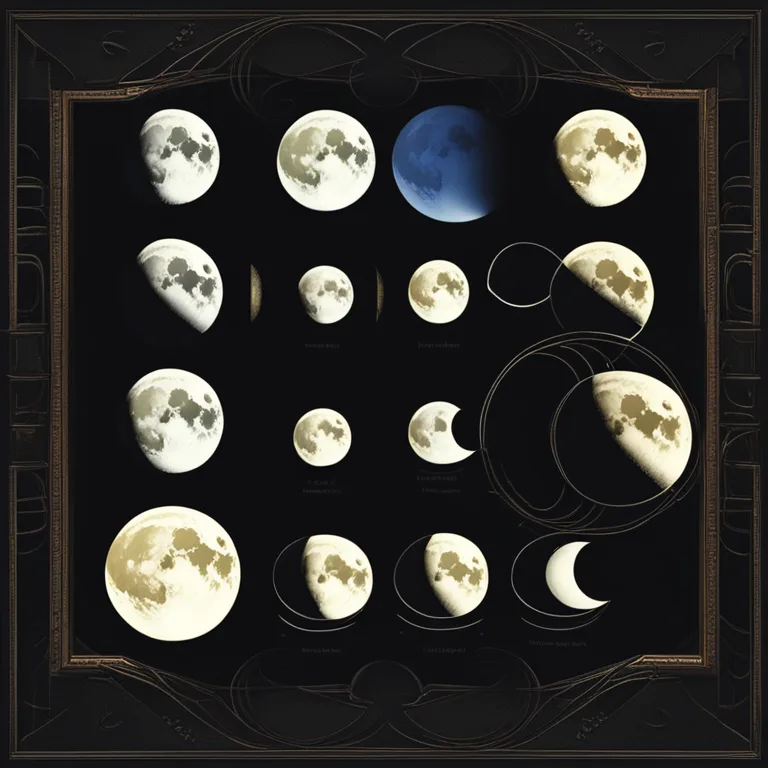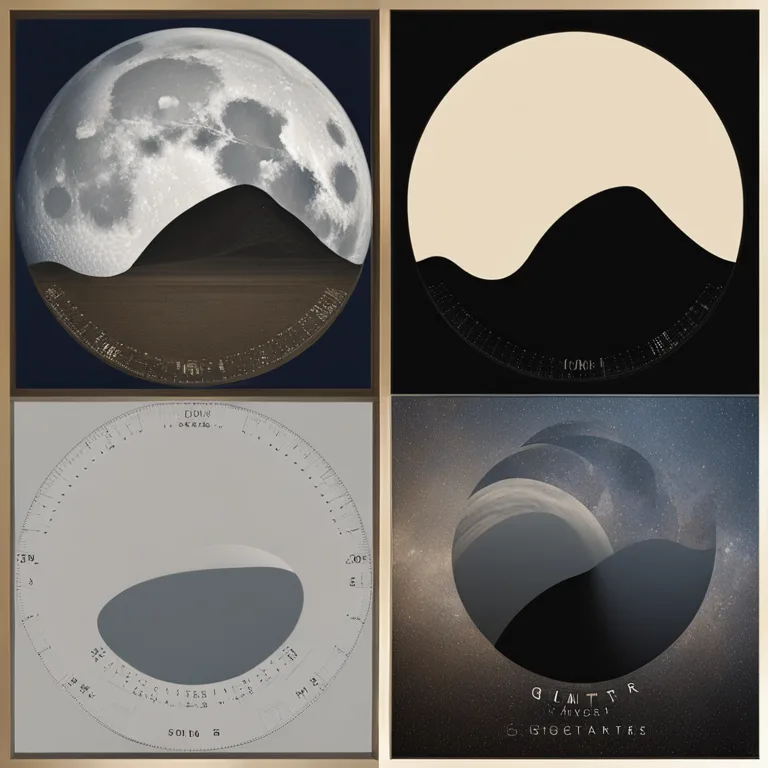
The Mystique of Moon Phase Durations
An in-depth look into the durations of lunar phases and their astrological significance.
article by Priya Deshmukh
The Lunar Cycle Overview
Our lunar companion governs the night sky, influencing the tides and serving as a beacon for the ebb and flow of life. The moon completes its cycle approximately every 29.5 days, a period known as a lunar month or synodic month. This cycle encompasses a progression through various phases, starting with the New Moon, Waxing Crescent, First Quarter, Waxing Gibbous, Full Moon, Waning Gibbous, Last Quarter, and finally the Waning Crescent. Each phase ushers in its own unique impact, perceived not just in the altering night skies, but also in astrological interpretations and the energies they represent.

The New Moon to Full Moon Journey
The journey from a New Moon to a Full Moon, known as the waxing phase, spans approximately 14 days. During this time, the visible illumination of the moon increases, symbolizing growth, inception, and accumulation. In astrology, this period is considered auspicious for beginnings and the launch of new projects. The New Moon itself is associated with a clean slate, whereas the Full Moon embodies realization and clarity. As we tread into 2024, paying attention to these cycles can serve as a guide for planning and goal setting in various aspects of life.

Contemplation in the Waning Moon
The waning phase, the period post Full Moon leading back to a New Moon, also extends roughly 14 days. Visibility diminishes, encouraging introspection, release, and closure. In personal growth and spirituality, this is a time to let go of what no longer serves you and to reflect on past endeavors. Astrologically, the waning moon is a time for inner work, forgiveness, and preparation for the renewal that comes with the approaching New Moon. This period is particularly significant for releasing negative energy and concluding unfinished business.

The Special Quarters
The First and Last Quarters mark pivotal transitions within the lunar cycle, each lasting about a week within the broader phases of waxing and waning. These quarters represent moments of decision and adjustment. The First Quarter, with its challenges, propels action and courage, often testing the foundation of initiatives started at the New Moon. Conversely, the Last Quarter signals the need to reassess and reorient as energies begin to settle. With horoscopes for 2024 and beyond relying on the revolutions of celestial bodies, understanding these quarters is vital for interpreting astrological forecasts.

Eclipses: A Lunar Anomaly
While examining the moon's phases, one cannot overlook the lunar eclipses. Although they do not occur monthly, eclipses are dramatic expressions of the moon’s energy. A lunar eclipse can only happen at a Full Moon, and it accentuates the typical attributes of this phase. Astrologically, eclipses are seen as potent catalysts for change, often revealing truths and shifting dynamics significantly. Eclipses in the upcoming years will continue to herald major turning points and should be marked with reverence in terms of their potential influence over personal and collective realms.
Aligning With the Lunar Rhythm
Aligning one's life with the rhythm of the moon can yield profound spiritual and astrological insights. By observing the natural progression from New to Full Moon and back again, individuals can capitalize on the energetic currents. The waxing phase invites action and growth, while the waning phase calls for reflection and release. As astrology guides through 2024 and beyond, let the lunar phases illuminate the path, recognizing that each stage holds a distinct key to personal and universal understanding.
Published: 12/22/2023
Modified: 12/22/2023
More predictions
Come back here soon to learn more about yourself and your future


The Phases Of The Moon: A Guide
Discover the distinct phases of the moon and their significance in this comprehensive guide to lunar cycles.


Moon Phases and Soulmate Connection
Discover how lunar cycles may influence soulmate encounters and the intertwining of destinies.


The Phases of the Moon: A Full Guide
Discover the different phases of the Moon and their significance in our celestial calendar.